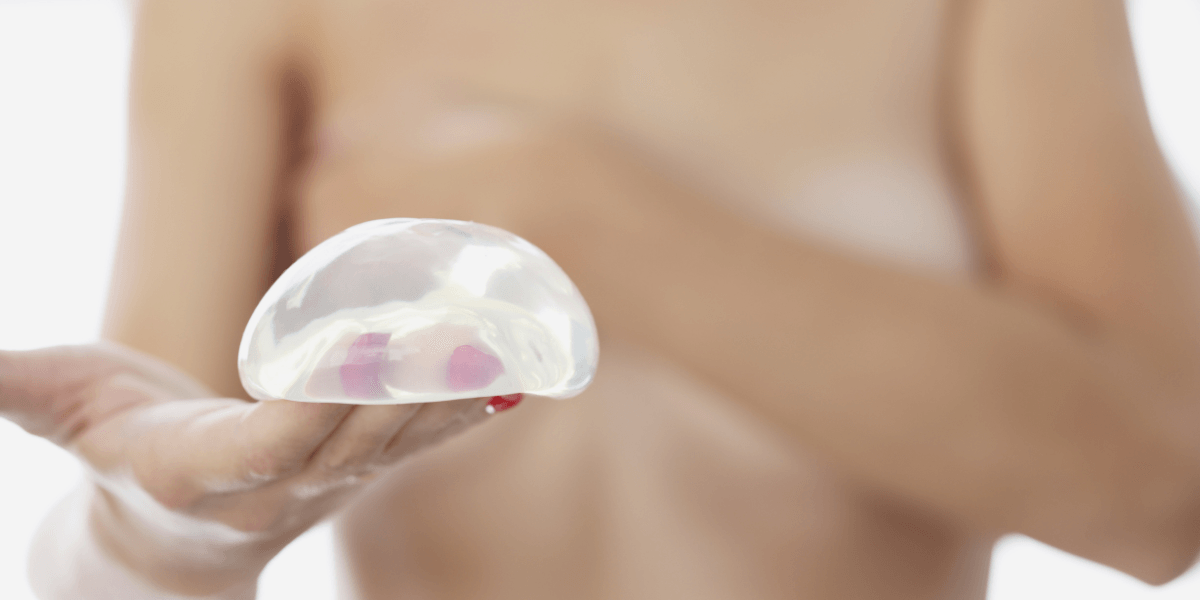Atypical Ductal Hyperplasia: What You Need To Know
If you've been diagnosed with atypical ductal hyperplasia, you may be feeling uncertain and scared. This is completely understandable, but it's important to remember that you're not alone.
In this blog post, we'll provide you with information on what atypical ductal hyperplasia is, the symptoms to watch out for, and treatment options. We hope this information will help ease your mind and empower you as you work through this diagnosis.
RELATED: The Importance Of Preventive Health Care For Women
A Guide to Atypical Ductal Hyperplasia: What You Should Know
What Is Hyperplasia?
Hyperplasia is an excessive growth of cells in a particular tissue in the body. It can be of two types:
- Usual Ductal Hyperplasia
In usual ductal hyperplasia, there is an overgrowth of cells in the breast duct. However, this does not increase your risk of breast cancer.
- Atypical Hyperplasia
In atypical hyperplasia, there is an overgrowth of atypical cells in the breast. This condition increases your risk of developing invasive breast cancer. Therefore, it is important to get a breast biopsy done to rule out cancer if you're diagnosed with atypical hyperplasia.
What Is Atypical Hyperplasia?
Atypical hyperplasia is a precancerous condition in which the cells of the breast appear abnormal under a microscope. Although atypical hyperplasia is not cancer and does not spread to other parts of the body, it can increase your breast cancer risk.
The progression to breast cancer typically involves a series of steps, beginning with the development of atypical hyperplasia, followed by the development of invasive cancer.
There are several types of atypical hyperplasia, each with its own set of symptoms and associated risks.
- Atypical Lobular Hyperplasia (ALH)
The most common type is atypical lobular hyperplasia, which typically affects the milk-producing breast lobules. This can cause non-cancerous cysts to form, as well as an increase in breast density.
While not cancerous, atypical lobular hyperplasia is considered a risk factor for developing breast cancer later in life.
- Atypical Ductal Hyperplasia (ADH)
Another type of atypical hyperplasia is ductal hyperplasia, which occurs when abnormal cells develop in the breast ducts. This can cause the breasts to feel lumpy or thickened.
While both types of atypical hyperplasia are a benign breast disease, they can be associated with an increased breast cancer risk. As such, it is important to discuss any concerns with a doctor.
What Is Atypical Ductal Hyperplasia?
Atypical ductal hyperplasia is a condition that affects the milk ducts in the breast. It occurs when there are abnormal changes in the cells lining the milk ducts.
These changes do not spread beyond the breast duct, and they are not cancerous. However, they can be a sign that cancer may develop in the future.
What Are the Symptoms of Atypical Ductal Hyperplasia?
Atypical ductal hyperplasia does not usually cause any symptoms.
However, in some cases, there may be a change in the way the breast feels. Your breasts may feel lumpy, bumpy, or thickened, and there may be a change in the size or shape of your nipple.
Additionally, there may be abnormal changes in breast tissue that can be detected on a mammogram. These changes may include calcifications (microscopic calcium deposits) or ductal dilation (enlargement of the small tubes that carry milk to the nipple).
If you experience any of these symptoms, it is important to consult with a doctor so that further testing can be done. Early detection and treatment of ADH can help to reduce your breast cancer risk.
How Is Atypical Ductal Hyperplasia Diagnosed?
Atypical ductal hyperplasia is typically diagnosed through a breast biopsy.
During a biopsy, a small sample of tissue is removed from the breast and examined under a microscope. This allows the doctor to determine if there are any abnormal changes in the cells.
There are several types of biopsies that can be used to diagnose ADH. The type of biopsy will depend on the size and location of the suspicious area.
Needle biopsies are the most common type of biopsy used to diagnose ADH. They can be performed using either fine-needle aspiration (FNA) or core needle biopsy (CNB).
In FNA, a thin needle is inserted into the breast and used to remove a small sample of cells. This procedure is usually done using local anesthesia, and it can be performed in a doctor’s office.
CNB involves the use of a larger needle to remove a small cylinder of tissue (a core biopsy). CNB is usually done using general anesthesia, and it is typically performed in a hospital setting.
In some cases, a surgical biopsy may be necessary to diagnose ADH. This is a more invasive procedure that involves making an incision in the breast to remove a sample of tissue. Surgical biopsies are usually performed in a hospital setting, and they require general anesthesia.
Once the biopsy specimen has been removed, it will be sent to a laboratory for further testing. The pathologist will examine the tissue under a microscope to look for any abnormal changes.
If the biopsy specimen shows evidence of ADH, your doctor will likely recommend additional testing. This may include:
- Mammogram
This is a breast cancer screening that can help to assess the size, shape, and density of the breast tissue.
- Breast Ultrasound
This is a painless test that uses sound waves to create a picture of the breast. It can be used to help determine if there are any suspicious areas that require further evaluation.
- Magnetic Resonance Imaging (MRI)
This breast imaging uses magnetic fields and radio waves to create a detailed photo of the breast. It can be used to help detect small lesions that may not be visible on a mammogram or ultrasound.
- Ductal Lavage
This is a test that involves flushing fluid through the breast duct, and collecting the fluid for further testing. It can be used to help assess your breast cancer risk.
What Causes Atypical Ductal Hyperplasia?
The exact cause of ADH is unknown, but there are several theories about what may contribute to the condition:
- Genetic Factors
Women with a family history of breast cancers are more likely to develop atypical ductal hyperplasia, and that this increased risk is due to genetic factors.
Specifically, atypical ductal hyperplasia is associated with mutations in the BRCA1 and BRCA2 genes. These genes are responsible for repairing DNA damage, and when they are mutated, they can no longer perform this critical function.
As a result, cells with these mutations are more likely to develop abnormal growth patterns that can lead to cancer.
- Hormonal Changes
Hormonal changes, such as those that occur during puberty, pregnancy, and menopause, can also contribute to the development of atypical ductal hyperplasia.
These changes cause an increase in the levels of estrogen and progesterone in the body, which can stimulate the growth of breast cells. This increased cell growth can lead to the development of abnormalities that can eventually lead to cancer.
- Environmental Factors
Exposure to certain environmental toxins, such as tobacco smoke and radiation, has been linked to an increased risk of developing atypical ductal hyperplasia.
It is thought that these toxins damage DNA and cause mutations that can lead to abnormal cell growth.
- Increasing Age
Age is an important risk factor for ADH, with the condition being most common in women over the age of 50.
RELATED: Firm Breast Workout: 6 Chest Exercises to Lift Breasts
- Having Dense Breast Tissue
Women with dense breast tissue are also at a higher risk of developing ADH.
Dense breast tissue is made up of a mix of glandular, connective, and fatty tissues. The more glandular and connective tissue there is, the denser the breasts are.
Multiple studies have shown that women with dense breasts are four to six times more likely to develop atypical ductal hyperplasia than women with less dense breasts.
- Past Radiation Treatments
Patients who have previously undergone radiation therapy to the chest area, such as for Hodgkin’s disease, are also at an increased risk of developing atypical ductal hyperplasia.
It is thought that the radiation damages DNA and causes mutations that can lead to abnormal cell growth.
- Weight
Being overweight or obese has also been linked to an increased risk of atypical ductal hyperplasia.
It is thought that the extra fat cells produce hormones that can stimulate the growth of breast cells.
- Alcohol Use
Drinking alcohol has also been linked to an increased risk of atypical ductal hyperplasia.
It is thought that alcohol damages DNA and causes mutations that can lead to abnormal cell growth.
How Common Is Atypical Ductal Hyperplasia?
Atypical ductal hyperplasia is a relatively common condition. It is estimated that approximately 5-20% of all women who undergo breast biopsies will be diagnosed with the condition.
How Is Atypical Ductal Hyperplasia Treated?
There are two main types of treatment for ADH: medical and surgical.
Medical treatment typically involves the use of hormone therapy or tamoxifen, a medication that blocks the effects of estrogen.
Meanwhile, surgery is usually reserved for patients who are at high breast cancer risk, or for those who have failed to respond to medical treatment.
Your surgical options are:
- Lumpectomy
A lumpectomy for ADH is typically performed as a preventive measure, as it can help to lower your risk of breast cancer.
The procedure is usually performed under local anesthesia, and involves making an incision in the breast and removing the affected tissue. In some cases, a small amount of surrounding tissue may also be removed.
After the surgery, the incision will be closed with stitches or staples.
The recovery process from a lumpectomy typically takes a few days, and most patients can return to their normal activities during this time.
Lumpectomies are generally safe and effective procedures, and are often successful in preventing the development of breast cancer.
- Mastectomy
A mastectomy is a more aggressive form of surgery that involves removing the entire breast.
The procedure is usually performed under general anesthesia, and takes one to three hours to complete.
After the surgery, the chest area will be covered with a bandage or surgical bra.
The recovery process from a mastectomy can take several weeks, and most patients will need to take it easy during this time.
Mastectomies are generally safe and effective procedures, but they do have some risks, such as infection, bleeding, and lymphedema.
- Ultrasound-Guided, Vacuum-Assisted Excision (UGVA)
UGVA is a newer form of surgery that can be used to treat ADH.
The procedure is less invasive than a traditional lumpectomy or mastectomy, and can be performed under local anesthesia.
During the procedure, a small incision will be made in the breast, and a special probe will be inserted. The probe uses ultrasound to guide it to the affected area of tissue. Once the probe is in place, suction will be used to remove the tissue.
The recovery process from UGVA is typically shorter than from a traditional lumpectomy or mastectomy, and most patients can return to their normal activities within a few days.
UGVA is a relatively new procedure, and more research is needed to determine its long-term effectiveness.
Are There Any Ways to Prevent Atypical Ductal Hyperplasia from Developing?
There is no sure way to prevent ADH from developing, but there are several steps that can be taken to reduce the risk:
- Regular Breast Self-Exams
It's important to maintain your breast health through regular breast self-exams.
During a self-exam, you should look for any changes in the size, shape, or texture of your breasts. If you notice anything unusual, you should consult a doctor.
Breast self-exams are best performed every month, three to five days after your period starts. This is because hormonal changes during the menstrual cycle can cause changes in the breasts that may be mistaken for signs of atypical ductal hyperplasia.
However, women of all ages and phases of life should perform regular self-exams. By being aware of your body and any changes that occur, you can reduce your risk of developing atypical ductal hyperplasia or any other type of cancer.
- Mammograms
Mammograms are X-rays of the breasts that can be used to detect changes in breast tissue.
Mammograms are typically recommended for women over the age of 40, but women with a family history of breast cancer may need to start getting them earlier.
Mammograms can be useful in detecting atypical ductal hyperplasia, as well as other types of breast abnormalities. However, they are not perfect, and some cancers may not be detected by a mammogram.
It's important to remember that mammograms are just one tool that can be used for breast cancer screening. They should be used in conjunction with regular self-exams, as well as clinical exams performed by a doctor.
- Healthy Diet and Exercise
A diet that is high in fruits, vegetables, and whole grains, and low in saturated and trans fats, can help reduce your risk of developing atypical ductal hyperplasia. Getting regular exercise can also help, as it helps to maintain a healthy weight.
- Reducing Alcohol Intake
Drinking alcohol can increase the risk of developing atypical ductal hyperplasia.
Women who choose to drink alcohol should do so in moderation, which means no more than one drink per day.
- Avoiding Tobacco Smoke and Radiation Exposure
Tobacco smoke and radiation exposure are two other factors that can increase the risk of atypical ductal hyperplasia.
Women who smoke or are exposed to secondhand smoke should quit, if possible. If quitting is not an option, you should try to reduce your exposure as much as possible.
Radiation exposure can come from a variety of sources, including X-rays, CT scans, and mammograms.
While it's important to get regular screenings for breast cancer, you should talk to your doctor about the risks and benefits of each type of scan before having one performed.
Some types of radiation exposure are unavoidable, but you should try to limit your exposure as much as possible.
Is It Possible To Get Breast Cancer If I Have Atypical Ductal Hyperplasia?
Yes, it is possible to develop breast cancer if you have ADH. However, the risk is relatively low.
Approximately 13% of women with ADH will go on to develop breast cancer within 10 years of their diagnosis.
However, this risk increases if you have multiple breast cancer risk factors, such as a family history of the disease.
If you have been diagnosed with ADH, it is important to discuss your individual risks with your doctor and to follow any recommended screening schedules.
How Can You Cope if You or a Loved One Has Been Diagnosed with Atypical Ductal Hyperplasia?
If you or a loved one has been diagnosed with ADH, it is important to remember that you are not alone. There are many resources available to help you cope with this diagnosis.
First, it is important to get as much information as possible about the condition. This can help you to make informed decisions about treatment and to understand what to expect.
Second, you should find a support group or counselor who can provide emotional guidance. This is especially important if you are struggling to cope with the diagnosis.
The National Breast Cancer Foundation (NBCF) offers support groups and educational resources for people affected by breast cancer.
The American Cancer Society (ACS) also offers support groups and educational resources. You can find more information on their website or by calling their 24-hour helpline at 1-800-227-2345.
Finally, make sure to take care of yourself physically and emotionally. This includes eating a healthy diet, getting regular exercise, and getting enough sleep.
Taking care of yourself will help you to cope with the stress of a diagnosis of ADH and will also help you to stay strong during treatment.
The Bottom Line
Although ADH is a benign breast disease, it is important to be vigilant about following your doctor's instructions and having regular mammograms and breast ultrasounds. By doing so, you can help ensure that you remain healthy and reduce your risk of developing breast cancer.
You may also be advised to make lifestyle changes, such as eating a healthy diet and exercising regularly. Making these simple changes to your routine can help you stay healthy and reduce your chances of getting this deadly disease.
Up Next:
- Common Causes of Sagging Breasts and Tips for Prevention
- Menopause Support Groups: How To Find The Right Community For You
- Sex During Chemo: A Couple's Guide to Loss of Libido










